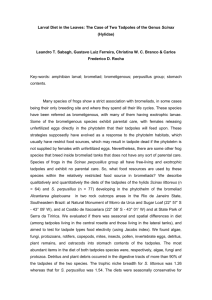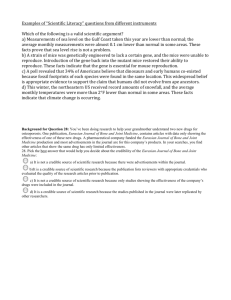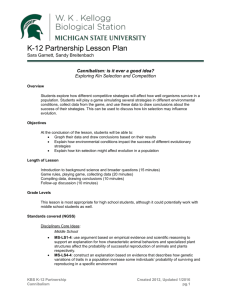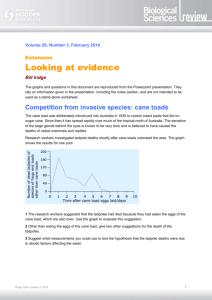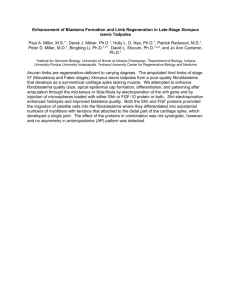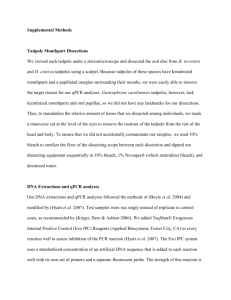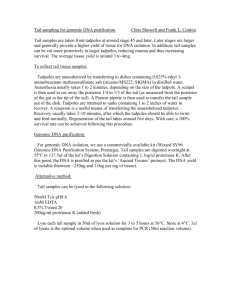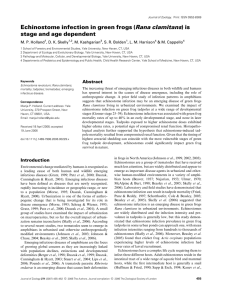Cannibalism-worksheet
advertisement
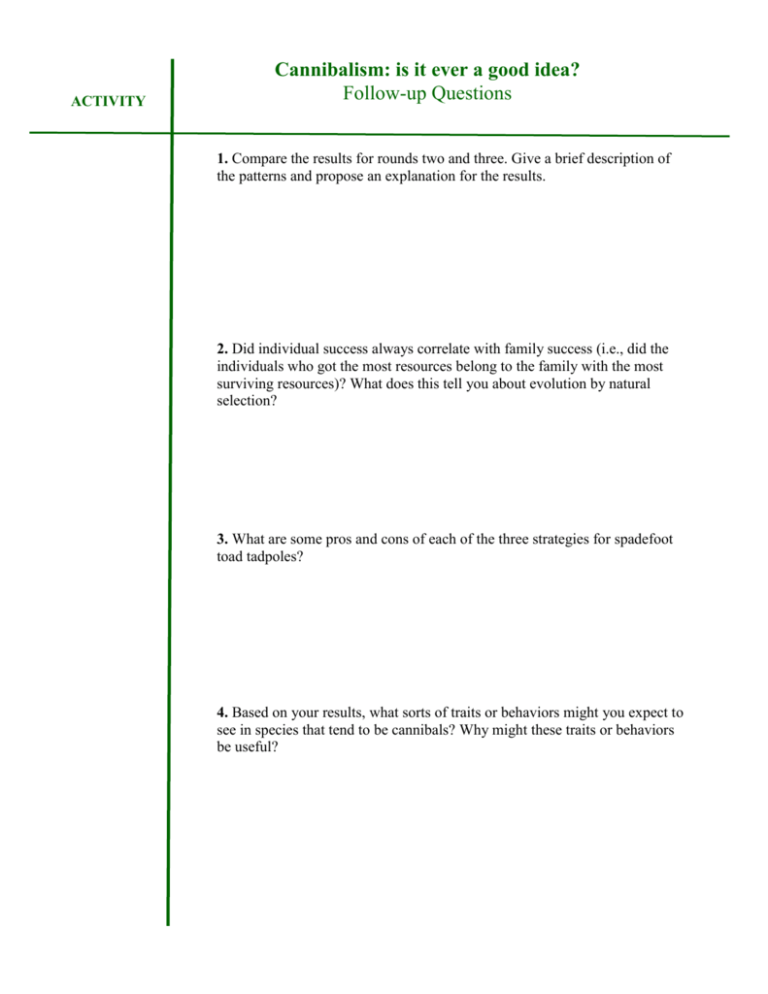
ACTIVITY Cannibalism: is it ever a good idea? Follow-up Questions 1. Compare the results for rounds two and three. Give a brief description of the patterns and propose an explanation for the results. 2. Did individual success always correlate with family success (i.e., did the individuals who got the most resources belong to the family with the most surviving resources)? What does this tell you about evolution by natural selection? 3. What are some pros and cons of each of the three strategies for spadefoot toad tadpoles? 4. Based on your results, what sorts of traits or behaviors might you expect to see in species that tend to be cannibals? Why might these traits or behaviors be useful? ACTIVITY Cannibalism: is it ever a good idea? Follow-up Questions [Suggested Answers] 1. Compare the results for rounds two and three. Give a brief description of the patterns and propose an explanation for the results. Ideally, in round two, Family 1 will eat only yellow resources, Family 2 will be evenly distributed among all four resources, and Family 3 will eat fewer green tadpoles but show no preference among the other options. In round three, Family 1 and Family 2 should not show a change, but Family 3 may be more likely to consume more green tadpoles. This is due to increased competition (everyone competing for resources in a smaller space) and a greater need for resources (everyone needs more now), which parallels carnivore morph tadpoles becoming less picky when they are much hungrier. If students’ results vary, see if they can explain why. 2. Did individual success always correlate with family success (i.e., did the individuals who got the most resources belong to the family with the most surviving resources)? What does this tell you about evolution by natural selection? They may not correlate completely (for example, individuals from Family 2 may consume more resources since they have no restrictions, but Family 3 may have more surviving members in the “pond”). This reinforces that evolution happens on a population level and not to individuals (the differential survival of individuals based on competitive abilities contribute to changes in gene frequencies on a population level, but the individuals themselves do not evolve). 3. What are some pros and cons of each of the three strategies for spadefoot toad tadpoles? Family 1 Family 2 Family 3 Pro Does not run the risk of eating relatives Not restricted in resources available Can take advantage of several resource types, less likely to eat relatives Con Restricted in resources available (can’t eat tadpoles) Runs risk of eating relatives Somewhat limited (tend not to eat relatives) 4. Based on your results, what sorts of traits or behaviors might you expect to see in species that tend to be cannibals? Why might these traits or behaviors be useful? Based on these results, you might expect to see that animals that eat members of their species have evolved ways to minimize the risk of eating relatives (such as being able to tell kin from non-kin or dispersing away from areas where their kin tend to be). ACTIVITY Cannibalism: is it ever a good idea? Data Collection Sheets Family: ____________________ Round Two: Full “Pond” Space Individual Group Member General Resource (Yellow) Number of Items Eaten Green Red Blue Tadpoles Tadpoles Tadpoles Total Number of Items Eaten Green Red Blue Tadpoles Tadpoles Tadpoles Total Total: Round Three: Half “Pond” Space Individual Group Member Total: General Resource (Yellow)



